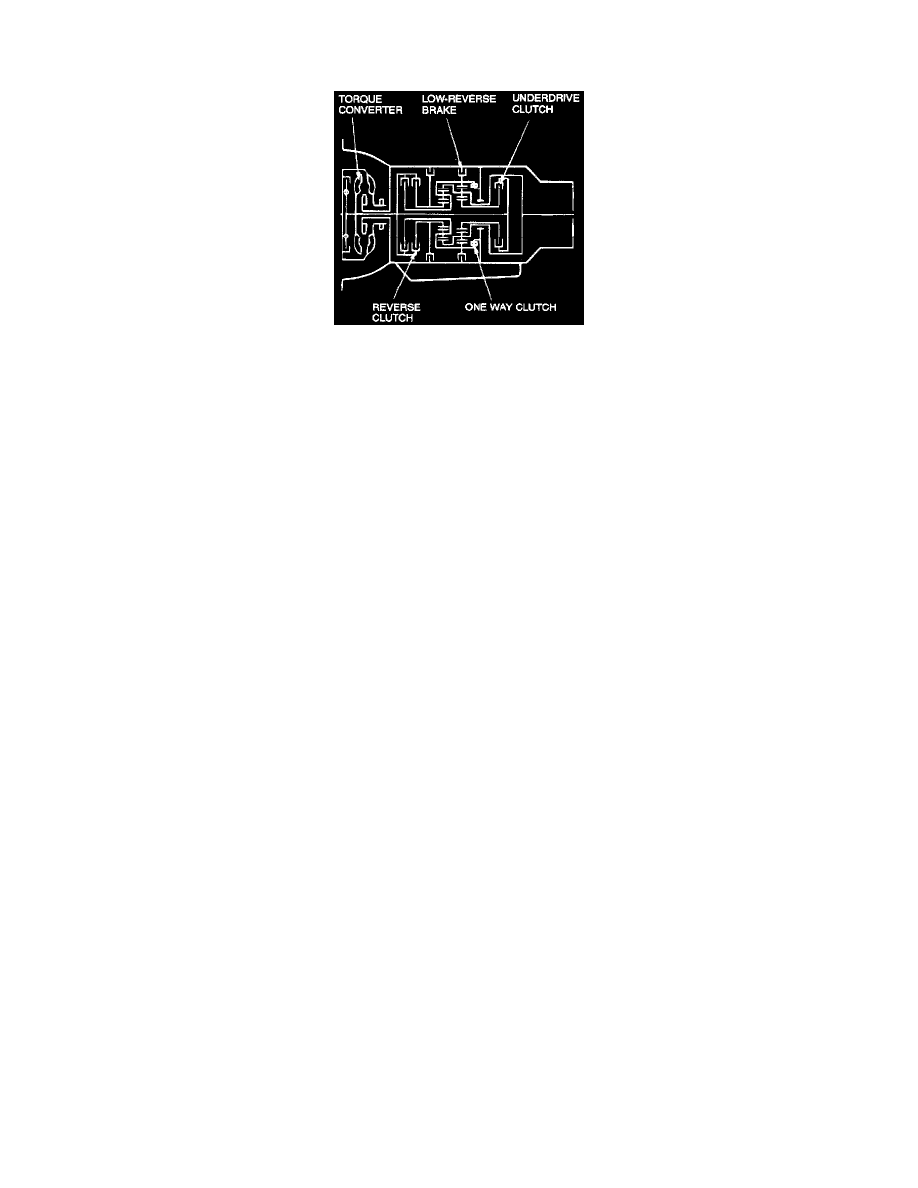Montero Sport ES 4WD V6-3.0L SOHC (2002)

Torque Converter: Testing and Inspection
TORQUE CONVERTER STALL TEST
This test measures the maximum engine speed when the selector lever is at the "D" or "R" position and the torque converter stalls. This tests the
operation of the torque converter (stator and one-way clutch operation) and the holding performance of the clutches and brakes in the transmission.
WARNING: Do not let anyone stand in front of or behind the vehicle while this test is being carried out.
1. Check the A/T fluid level and temperature. Check the engine coolant temperature.
^
A/T fluid level: At the "HOT" mark on the dipstick
^
A/T fluid temperature: 70 - 80°C (158 - 176°F)
^
Engine coolant temperature: 80 - 100°C (176 - 212°F)
NOTE: It measures A/T fluid temperature in scan tool (MUT-II)
2. Chock both front wheels.
3. Connect a tachometer.
4. Apply the parking and service brakes fully.
5. Start the engine.
6. Move the selector lever to the "D" position. Fully depress the accelerator pedal and read the maximum engine speed.
CAUTION:
^
The throttle should not be left fully open for any more than five seconds.
^
If you repeat the stall test when the fluid temperature is 80°C (176°F) or more, move the selector lever to the "N" range and let the engine run
at approximately 1,000 r/min for at least one minute and then wait until the ATF temperature returns to 80°C (176°F) or lower.
Standard value: Stall speed:
2,000 - 2,600 r/min <3.0L Engine>
2,300 - 2,900 r/min <3.5L Engine>
7. Move the selector lever to the "R" position and repeat step 6.
Standard value: Stall speed:
2,000 - 2,600 r/min <3.0L Engine>
2,300 - 2,900 r/min <3.5L Engine>
TORQUE CONVERTER STALL TEST JUDGEMENT RESULTS
1. Stall speed is too high in both "D" and "R" ranges
^
Malfunction of torque converter (Slippage on the splines of the torque converter and the input shaft)
^
Low line pressure
^
Low-reverse brake slippage and malfunction of one-way clutch
2. Stall speed is too high in "D" range only
^
Underdrive clutch slippage
3. Stall speed is too high in "R" range only
^
Reverse clutch slippage
^
Low-reverse brake slippage
4. Stall speed too low in both "D" and "R" ranges
^
Malfunction of torque converter (Slippage of the one-way clutch)
^
Insufficient engine output
